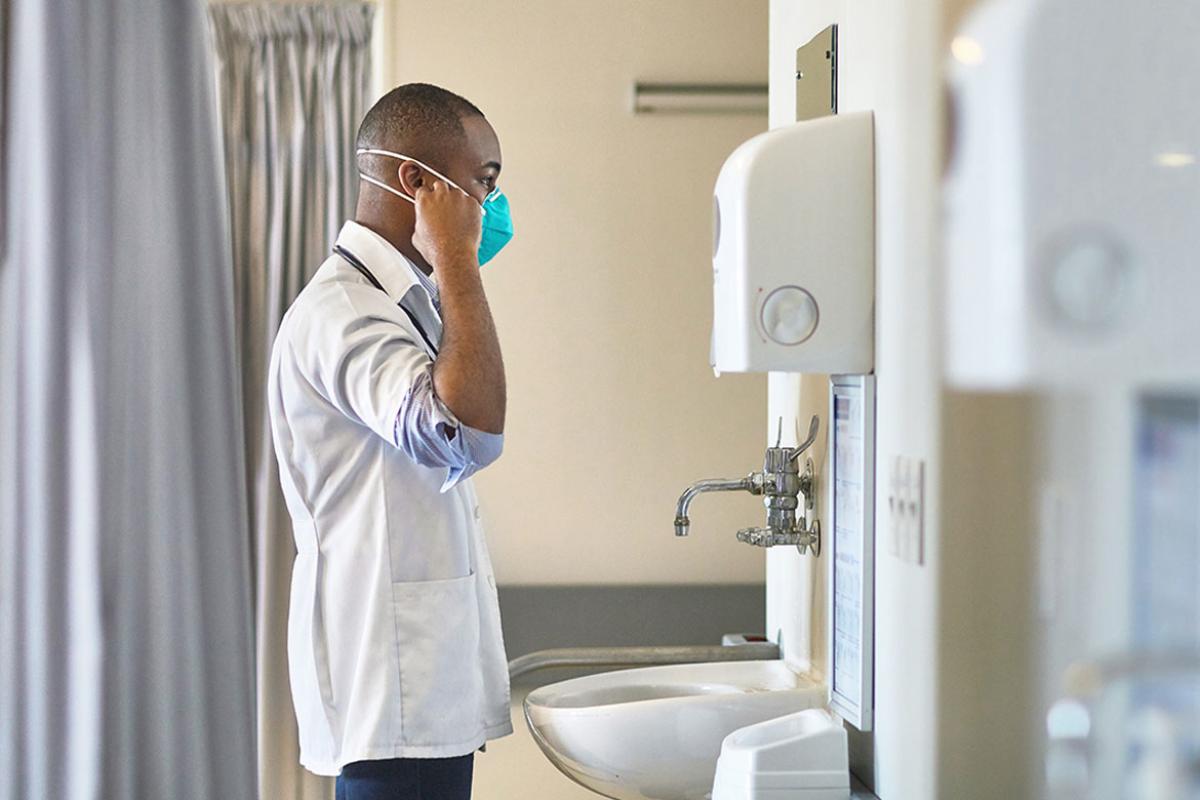Training to become a physician is a marathon. The opening months of medical school, however, can often feel like a sprint.
The volume of information that medical students are expected to retain and the pace at which the curriculum moves often come as a shock to the system. This can make those first few months of medical school stressful and emotionally taxing.
“Students are increasingly anxious in this period,” said Suzanne J. Templer, DO, an AMA member who is assistant dean for student affairs and director of coaching services at the University of Pittsburgh School of Medicine.
One way that Dr. Templer helps medical students manage the transition is “to talk about sphere of control,” she said. That means helping medical students recognize “what they can control and giving themselves permission to let go of the rest.”
In an interview with the AMA, Dr. Templer offered guidance on how medical students can maintain and improve their well-being as M1s.
Find a routine and stick to it
A set routine is a tool that can help a medical student stay grounded, Dr. Templer noted. She said students should set up rituals that are more than just study blocks. They could include trying daily workouts, a standing coffee date or even a few minutes of morning meditation.
“There were studies about the importance of routine during the pandemic,” said Dr. Templer. That could include starting “the day with a morning routine like: I wake up, I make my cup of tea or coffee, and I read for 10 or 15 minutes. Maybe you even consider journaling and set an intention for the day.”
Research shows that when people followed a routine, they “tended to feel more in control of their day,” Dr. Templer noted. “That what a lot of this is about: taking back control.”
The AMA Succeeding in Medical School series offers tips and other guidance on a wide range of critical topics, including preparing for USMLE exams, navigating clinical rotations, publishing scientific research, and maintaining optimal health and wellness.
Compartmentalize
Your primary mission as a medical student is to grow into a physician. At the same time, you’re not just a medical student, and that is critical to remember, said Dr. Templer, who touted the importance of physical and mental boundaries.
What does that look like in action? It means avoiding studying in your bedroom—especially in your bed—and trying not to let medical school be a dominant topic of conversation.
Dr. Templer said students should think of “medical school as your main day job, and then the other components of your life- family responsibilities, personal space, spiritual time, and other facets that make you the unique individual you are, also need to be attended to.”
That translated into “physically and mentally putting stuff down—whether it’s putting things down when you get home, when you’re in the bedroom, or even just at the end of the day,” she said.
Dive deeper:
- Adrift as an M1? Essential advice to help you right the ship
- Hone these habits as an first-year medical student—it'll pay off
- 5 tips to survive first-year anatomy lessons in medical school
- Mastering M1: Top questions for your first year of medical school
Practice self-compassion
Medical students are too often their own harshest critics. Giving yourself a break in a challenging time can go a long way toward maintaining well-being, Dr. Templer said.
"Students can extend compassion to others when they don’t do well on an exam,” she said, “but when it’s them, they beat themselves up.” A more forgiving approach to one’s self is “about allowing yourself grace, recognizing that life happens, and everyone has bad days.
"Everyone’s journey is different,” she added. “Some students have families, others don’t. It doesn’t mean one is smarter or more high achieving than the other; it’s just different. Students have to acknowledge that and not make it an all-or-nothing mindset.”
Stay connected
Whether it’s your roommate, a fellow medical student, or an old friend back home, make time to truly connect. Options include virtual brunches with out-of-town friends and in-person meetings with classmates. Isolation, she said, is counterproductive.
It is vital for medical students to make the time to maintain meaningful personal relationships.
“Don’t forget about the people you care about,” she said. “It’s important. Even if you can’t get back home, try to stay in touch. It doesn’t matter how you stay in touch, as long as it fills your cup.”
Dive deeper:
- As an M1, find a studying style and remember to leave the library
- Your medical school classmates are not your competition
- How to prep for a competitive physician specialty in preclinical training
- 4 tips to find enriching medical student leadership opportunities
Celebrate your victories
Dr. Templer recommended reveling in the small wins—getting to class on time, nailing that presentation, or even just surviving the week. These tiny triumphs matter for maintaining the right perspective.
“Med school is a very long journey,” she said. “Sometimes it's hard for people to stop and see where they're at in the moment because they're looking so far into the future. So helping people recognize what's going on and what they've been able to accomplish in the past day, the past week or the past month is really important.”
One method to help students keep track of their wins is to write down three things that went well in a given day or week.
“It’s a type of gratitude practice that helps reset the mind from dwelling on the negative," said Dr. Templer.
Read up on the eight ways to cut medical student burnout and explore the AMA STEPS Forward® toolkit to improve medical student well-being.
More on the transition to med school
The AMA’s Facilitating Effective Transitions Along the Medical Education Continuum handbook looks at the needs, including maintaining wellness, of learners across the continuum of medical education—from the beginning of medical school through the final stage of residency
The learner sections in this book, which was created by the AMA Accelerating Change in Medical Education Consortium, help medical students and resident physicians acclimate to the various settings and expectations in the medical training environment. The faculty sections then provide blueprints for transition programming, as well as resources to help students and residents navigate challenges in transitions. Download the handbook now.




